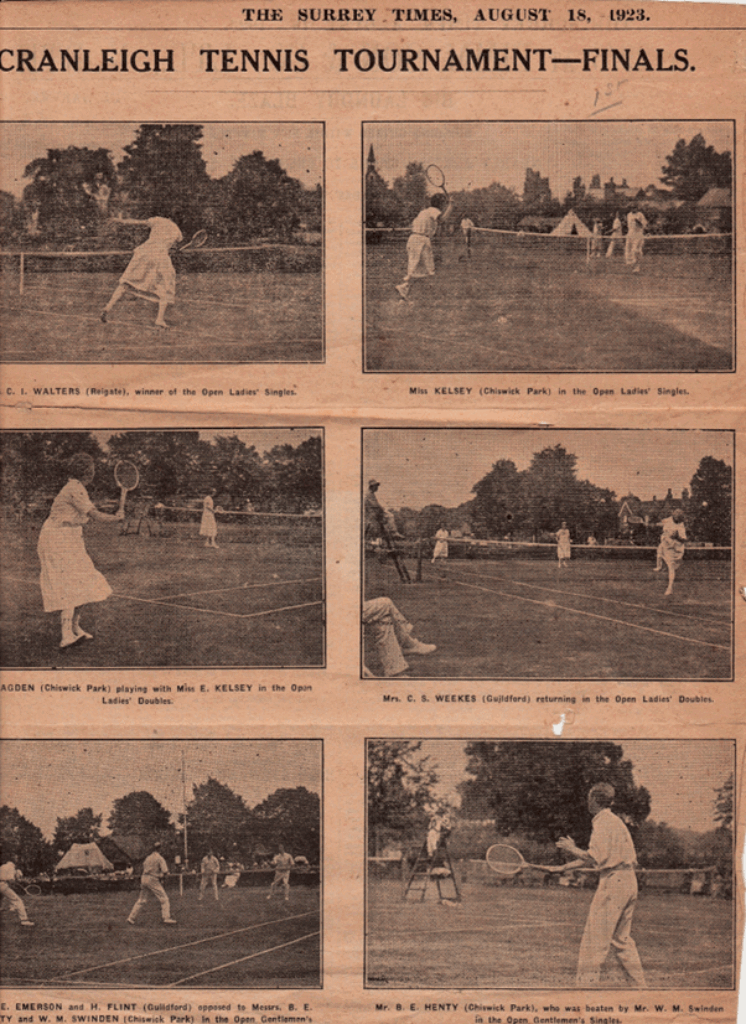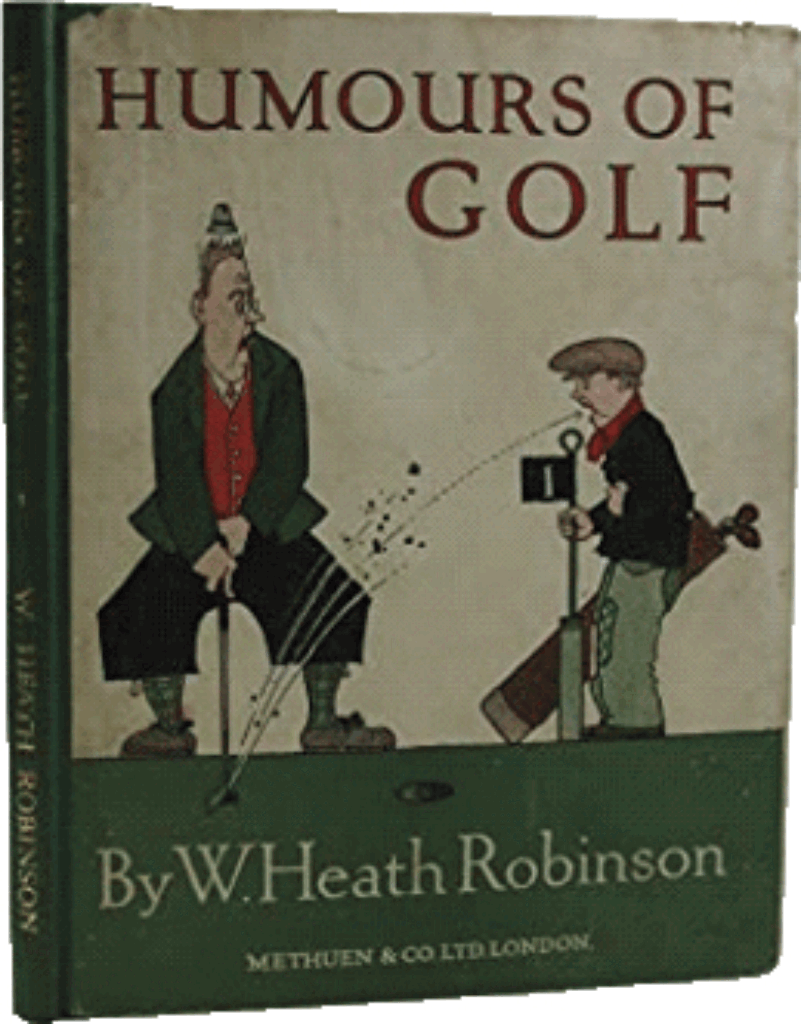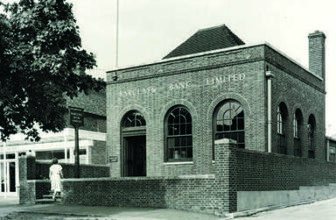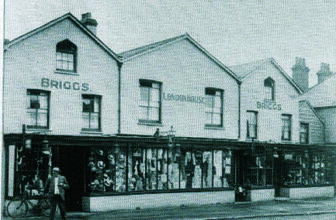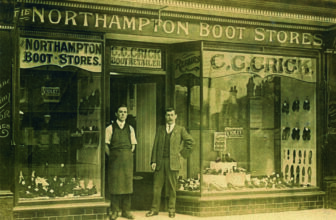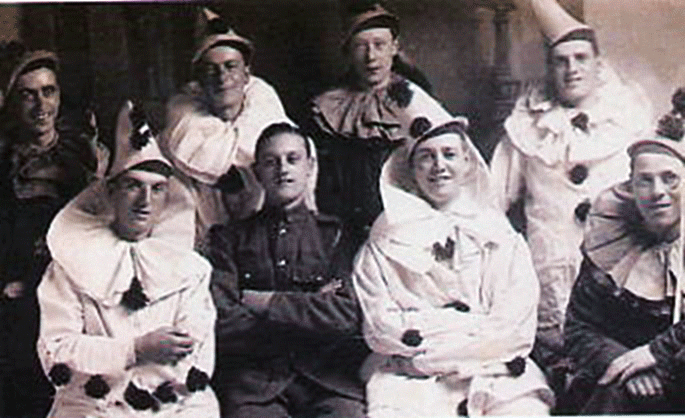
by Joy Horn Main Photo: Pierrot troupes were popular from the First World War to the 1950s
What was going on in this village one hundred years ago?
In January the newly-formed Cranleigh Pierrot troupe gave its first performance, at the Central Hall. There was a large and appreciative audience and the troupe gave a second show in April.
In February part of the former Parsonage Farm, on Ewhurst Road, was sold by Sir Gerald Chadwyck-Healey of Wyphurst to Arthur B. Johnston of New Park Farm, with far-reaching results.
Later in 1923 and within a few months of this purchase, A.B. Johnston published a book called The Agricultural Tragedy. Readers had only to get to the third page to realise that ABJ was thoroughly disillusioned by the government’s treatment of farmers, which had caused many of them to go bankrupt. It should have come as no surprise that ABJ began to develop as housing the farmland that he and his family had earlier laboriously accumulated and made productive.
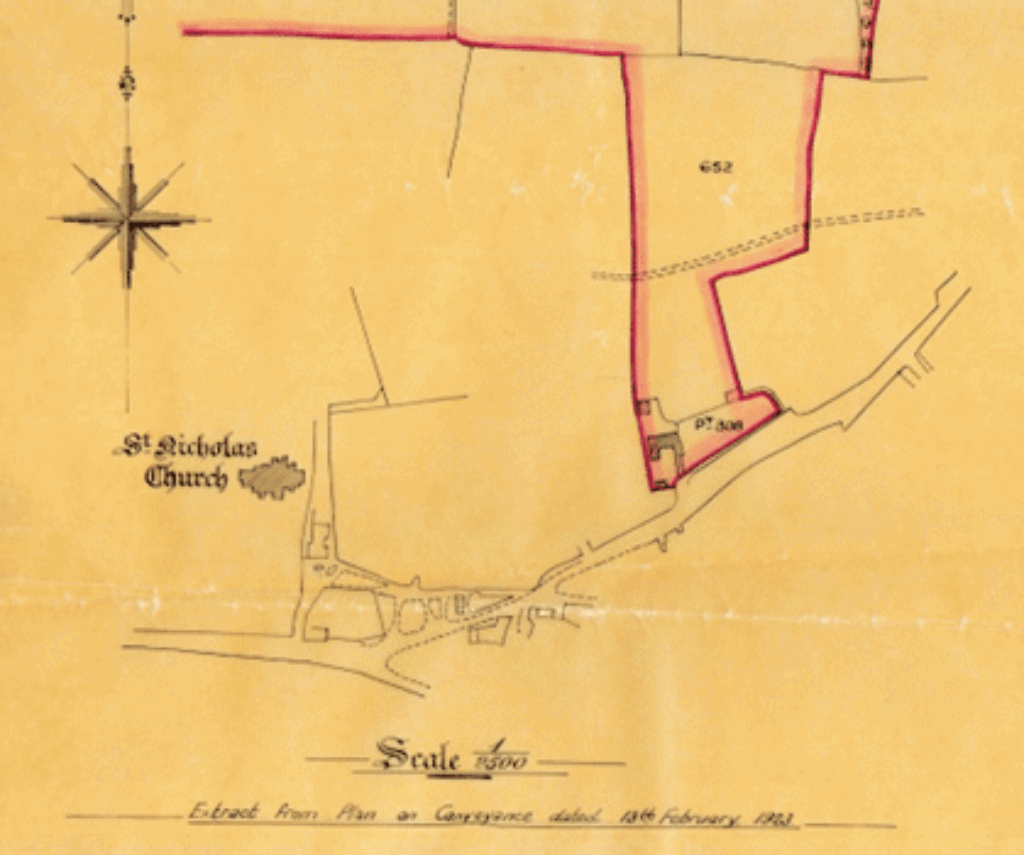
Tragedy struck the community in March when Lawrence Pirie, 15, of St Andrew’s Bakery, was crushed under the wheels of a motor lorry when cycling along the High Street. The funeral was held on Sunday afternoon, April 1st, at St Nicolas church, with a large attendance of young people. Lawrence had been a member of St Andrew’s church choir for about seven years, and a server there.
The Rectory Fête was held on Wednesday June 13th, and Lady Chadwyck-Healey opened it. There were 800-900 people visiting it, ‘and had it not been for the prevailing whooping-cough, there would have been more’. It raised £120.
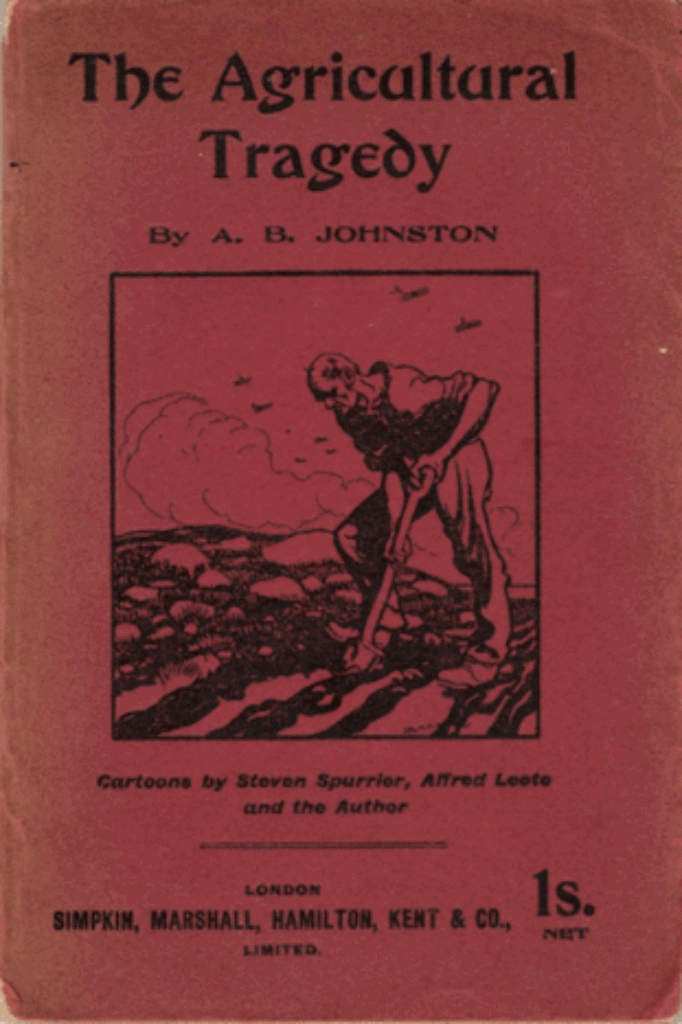
After the success of the experimental Cranleigh Tennis Tournament held in 1922, the first proper tournament was held from August 8th to 11th, with the approval of the Lawn Tennis Association. There were five open events, besides five local events and a boys’ singles. Dividing artificial hedges were set up on the Common, and tennis courts marked out. Local boys were recruited as ball boys, half of whom had never seen a game of tennis played, and had no idea what a ball boy was expected to do. Fortunately, they quickly picked up their responsibilities. There were tents for competitors, officials and the ball boys. Because the tournament was held on the Common, the organisers were not allowed to charge for entry, so it was a marvellous free show and a big success.
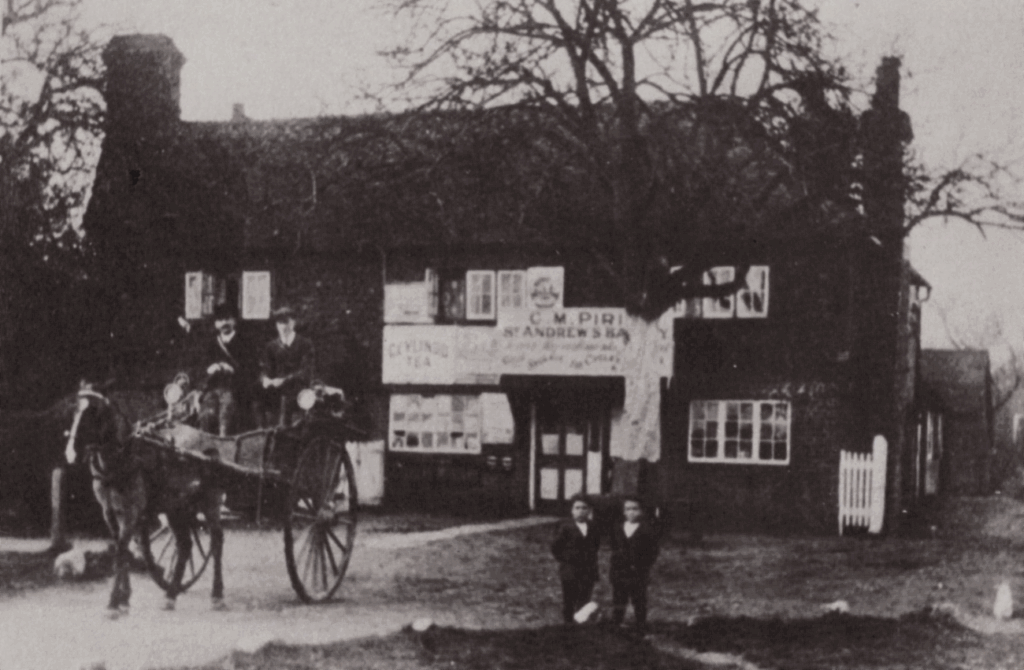
In September, a serious fire broke out at night in the builder’s yard of Frederick Warren in St James’s Place. It must have revived memories of the great fire at Holden’s works in the centre of Cranleigh in 1906. There had been other major fires: in 1906 at David Mann & Sons and just the previous year at Parsonage Farm, off the Ewhurst Road. Warren’s two-storey joinery shop was destroyed, together with the tools of the dozen men who worked there. Volunteers helped the occupants of the two nearby cottages to remove all their furniture and possessions. Cranleigh Fire Brigade, with its manual engine, and the Guildford force, with its motor engine able to draw water from Common House Pond, managed to bring the fire under control. A ‘large gathering of spectators’ was kept in good order by the police. After this fire, Warren’s seems to have transferred operations to Holden’s former yard (where M&S Simply Food is).
Another book published in 1923 was Humours of Golf by William Heath Robinson. He was living at The Copse, Horsham Road, and had his studio in a shed in the back garden.
The Parish Register of Burials for the year mentions that three people had died at the Hambledon Infirmary (one a 3-day-old baby), suggesting that they were workhouse paupers; two had died at the Brookwood Mental Hospital, Woking; two in the Cranleigh Village Hospital; and one 7-year-old boarder at Hesketh School in Bridge Road.
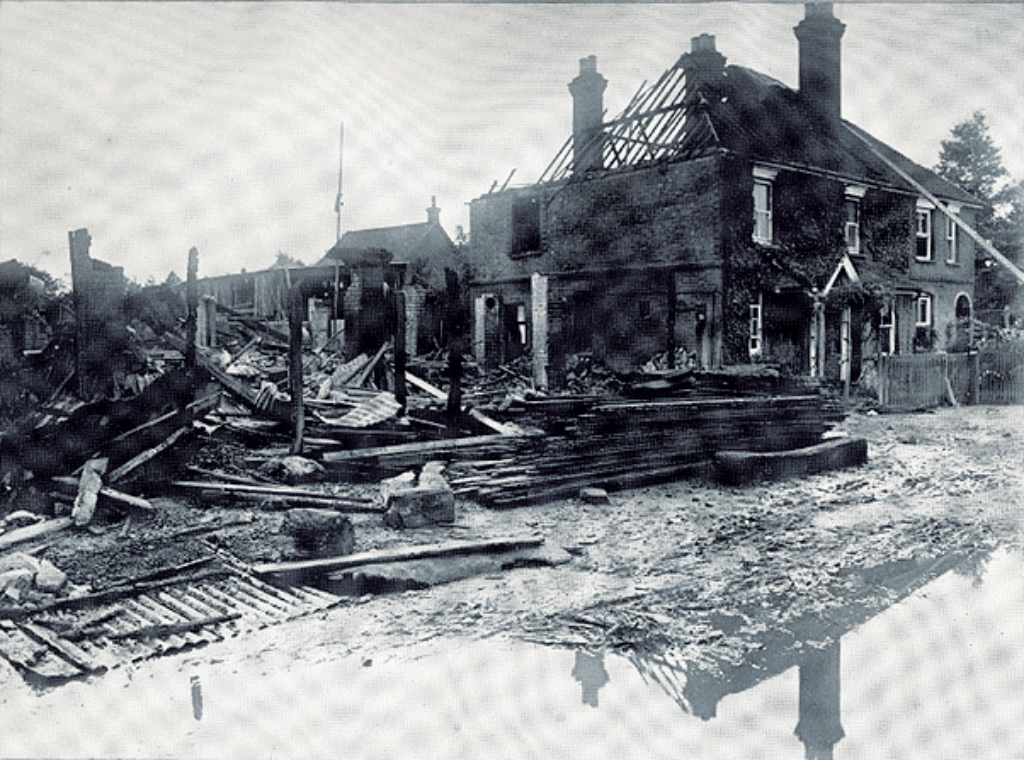
Many familiar local names figure among the Marriages for the year: Bonsey, Buckman, Eede, Farnfield, Squelch and Stedman. Of the 26 couples, 13 were both from Cranleigh, 10 were marrying someone from a nearby village, and in only 3 cases had a Cranleigh person married someone from further afield.
On New Year’s Eve at midnight, Big Ben’s chimes were broadcast for the first time by the British Broadcasting Company, in its second year of existence. So popular were they that in February 1924 they became a daily time signal. I wonder how many Cranleigh people had the facility to hear this historic event?
The Cranleigh History Society meets on the second Thursday of each month at 8pm in the Band Room. The next meeting is on Thursday December 14th, when Joy Horn will speak on ‘Cranleigh Myths’. Visitors are welcome.

